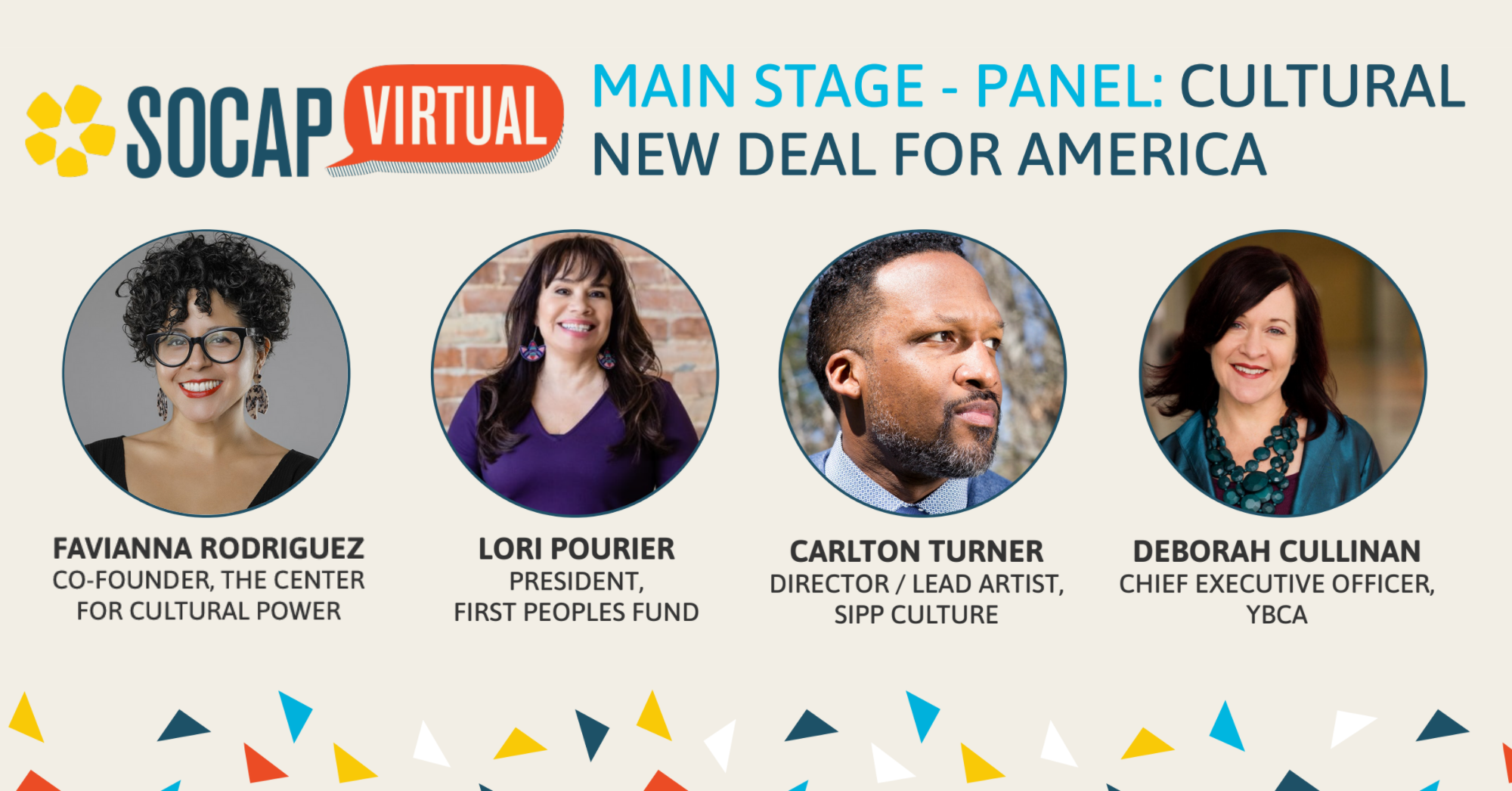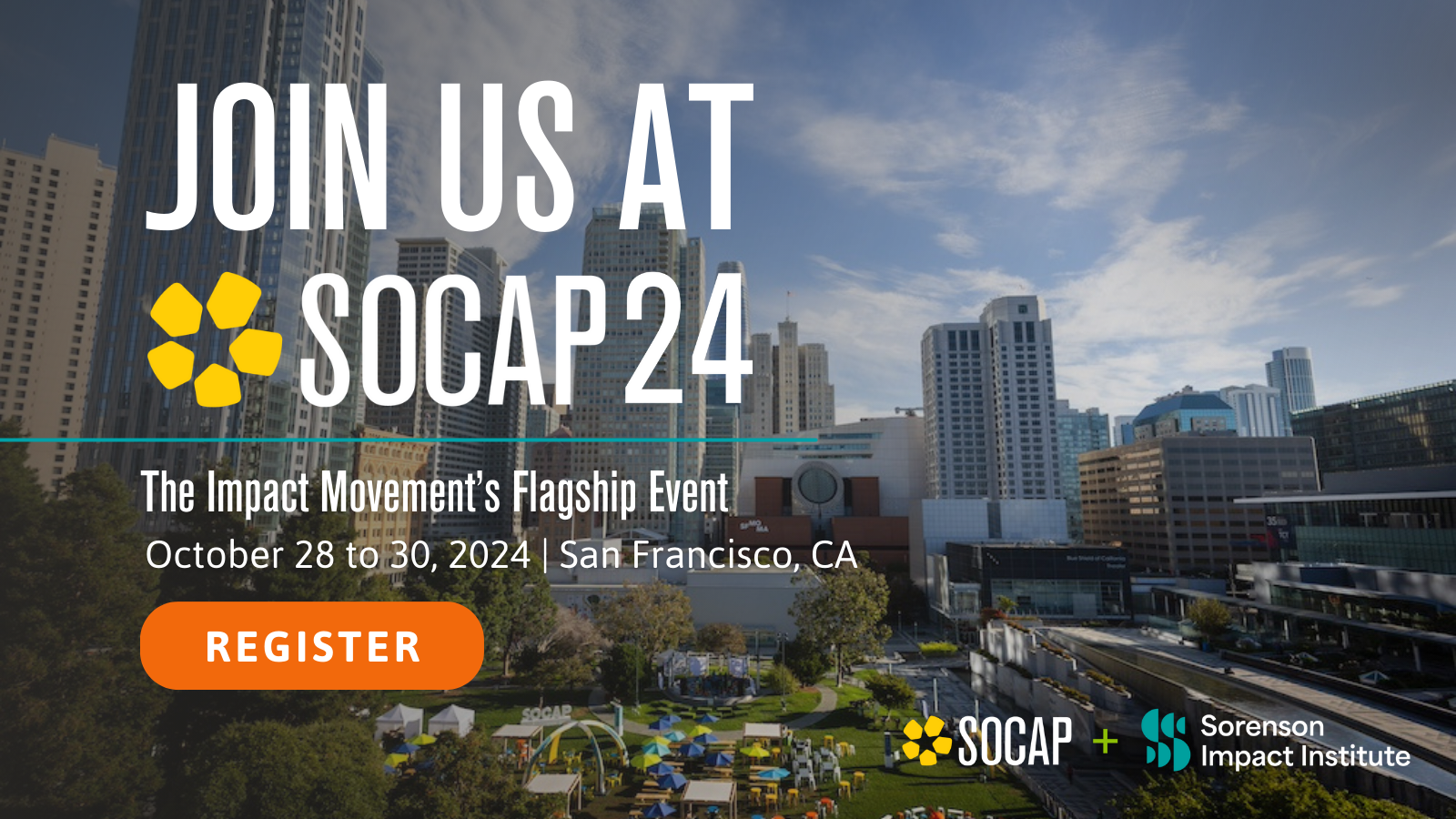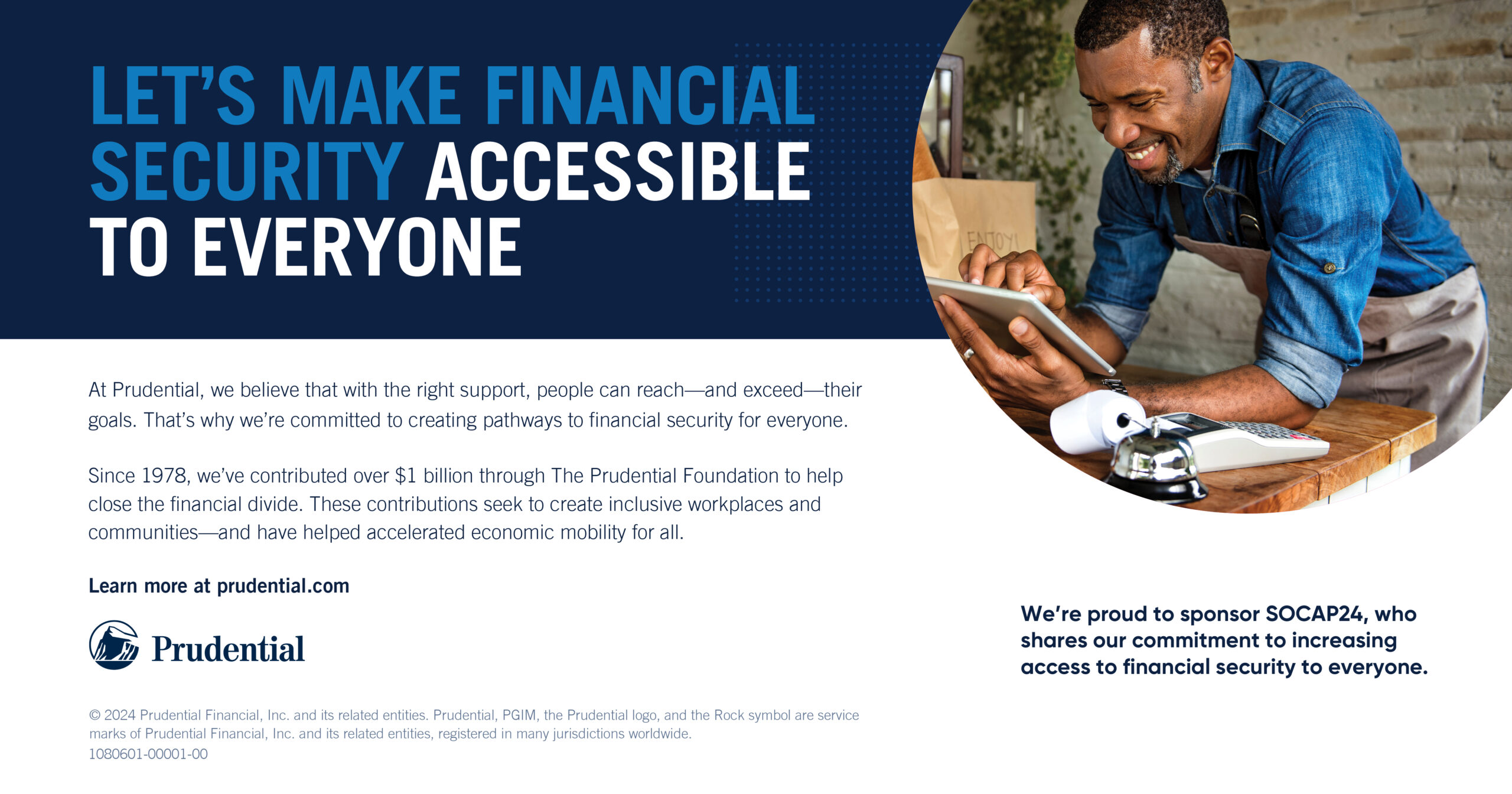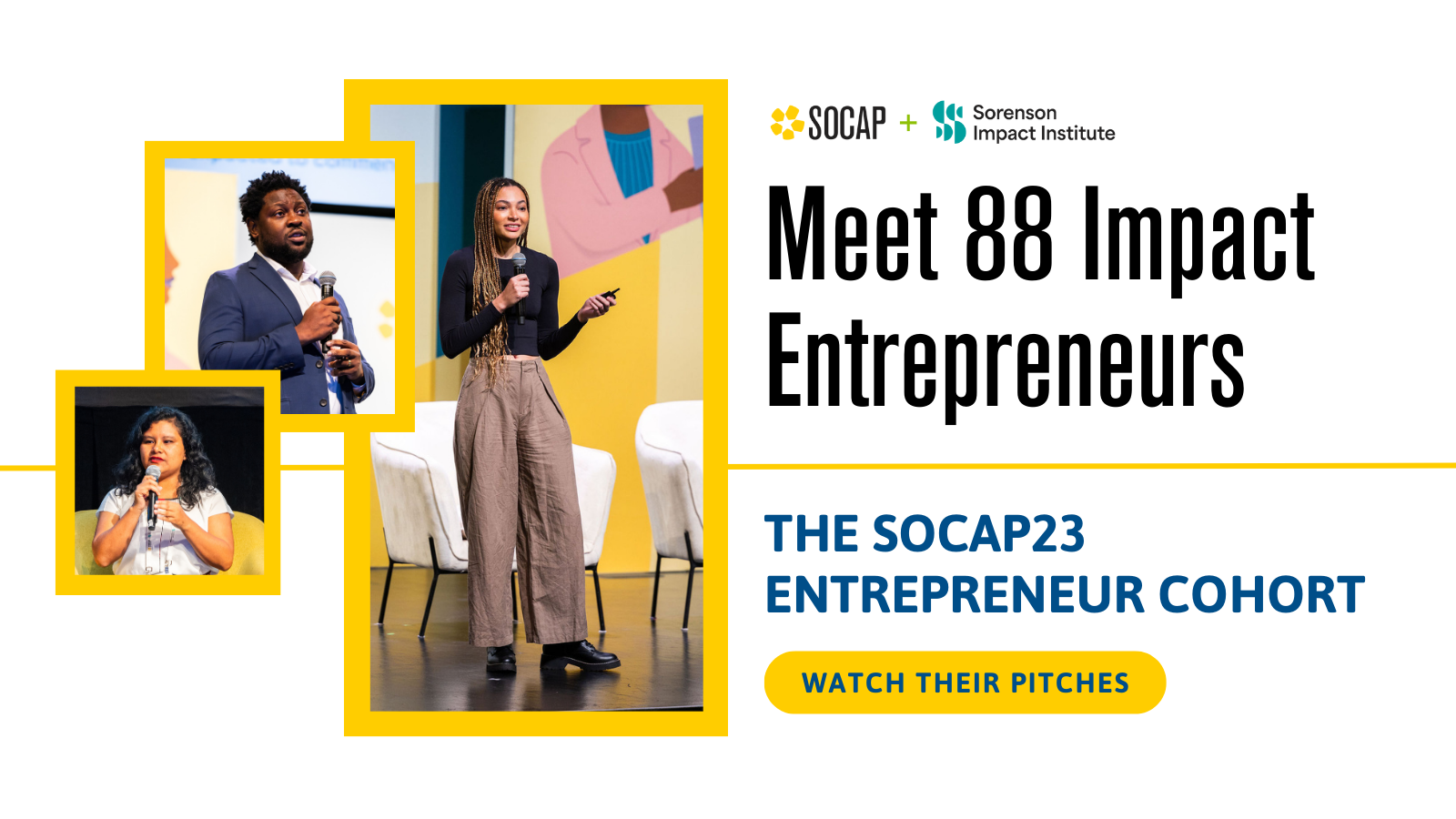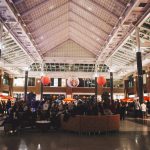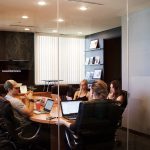Artists Address Structural Inequities with Introduction of Cultural New Deal
Artists are first responders to heal the soul of a community. As Deborah Cullinan, CEO of the Yerba Buena Center for the Arts, shared at SOCAP Virtual 20: “We’re here to tell you that artists drive meaning, they cultivate new social imaginaries, they help us come together and imagine new and better systems. Artists are the essential investors in their community, and we simply can’t do impact investment without artists and their communities in the lead.”
We are in the midst of a global health crisis, an economic crisis, civic unrest, and environmental degradation. We are at a crossroads: We must choose if we will perpetuate existing systems or move towards a more just, and shared future of equitable economic empowerment.
The Cultural New Deal for America helps us envision a new future of economic empowerment and gives us a road map to get there. “It was collectively authored by many, in order to address the fundamental question that we face now, which is whether we will emerge from this era, choosing to maintain the same systems and beliefs that support the current culture of division and death, or if we will instead move forward toward a more just, shared future, guided by worldviews that foster collaboration and mutuality,” says Cullinan.
Signed by more than 2,000 artists at the time of this writing, the Cultural New Deal calls for:
- I. The support, recognition, and prioritization of the leadership of Black people, Indigenous peoples, and people of color.
- II. The reversal of long-term inequities in funding, hiring, and resources in the arts and culture sector.
- III. Investment in arts and cultural ecosystems for Black, Indigenous, and communities of color.
- IV. Investment in building healthy communities through centering cultural and racial equity.
- V. Accountability, commitment, and integrity in the pursuit of cultural and racial justice.
In this session from SOCAP Virtual 20, we hear from leaders involved in launching the Cultural New Deal:
- Lori Pourier, President/CEO of the First Peoples Fund
- Carlton Turner, Lead Artist/Director of Sipp Culture
- Deborah Cullinan, CEO of the Yerba Buena Center for the Arts
- Favianna Rodriguez, Co-Founder/President of The Center for Cultural Power
Watch the full session or read the transcript below.
Watch Cultural New Deal for America
Deborah Cullinan: We’re here today to talk about the Cultural New Deal. And I am just going to set the tone and introduce you to our amazing colleagues. The Cultural New Deal is a call that was spearheaded by ArtChangeUS, The Center for Cultural Power, First Peoples Funds, the National Association of Latino Arts and Culture, Race Forward, and Sipp Culture. And it was collectively authored by many, in order to address the fundamental question that we face now, which is whether we will emerge from this era, choosing to maintain the same systems and beliefs that support the current culture of division and death, or if we will instead move forward toward a more just, shared future, guided by worldviews that foster collaboration and mutuality. Thousands of artists, arts and culture leaders have signed on. I think accurately, it’s upwards of almost 2,000.
At its core, the Cultural New Deal lays bare the cultural, structural, and racial injustice that has resulted in death and in the degradation of lives, communities, and our planet. The Cultural New Deal is a call to action that recognizes that artists, Black, indigenous, Native American, and other artists of color, especially those who are disabled, deaf, and or LGBTQ(IA+), are working with their communities every day to create the conditions against this injustice, to generate health and well-being. And we are here because communities are the best designers and the best leaders of their own systems and their own futures. So, we’re here today on the main stage of SOCAP, arguably the biggest impact investment conversation in the world, because this conversation and this conference came into being to explore the intersection of money and meaning, and it stepped right into the center of an ongoing conversation about wealth, who holds it, and how it’s used. But it has yet to blow open the system, to address the inequities, to redefine wealth, and to reimagine investment.
And I’m joined by these three powerful people who were part of launching the Cultural New Deal; Carlton Turner from Sipp Culture, Laurie Pourier from the First Peoples Fund, and Favianna Rodriguez from The Center for Cultural Power. And we’re here to tell you that artists drive meaning, they cultivate new social imaginaries, they help us come together and imagine new and better systems. Artists are the essential investors in their community, and we simply can’t do impact investment without artists and their communities in the lead. So, I would love to introduce you to these three people and to ask each of you to talk a little bit about how this came to be, why it’s essential now, and what it means for us in terms of how we think about wealth.
Favianna Rodriguez: Hi, everyone. Very happy to join you. I’m joining you from Ohlone territory, also known as Oakland, California. I’m a lifelong resident of the Bay Area, grew up in Oakland, California during the era of the war on drugs. And so, have really witnessed the ways in which our communities have moved from huge divestment, and really witnessing the intersections of many different things, from gentrification to the loss of artists in the Bay Area. And as an artist, but also a leader in the arts, what the Cultural New Deal represents, is really reflecting the moment that we are in, making a call for cultural equity. And so, I want to first talk about the moment we are in because I think that it is really the foundation of why this call happened at this time.
We are at the intersection of four crises; the pandemic, of course, which is in itself a crisis, not because the pandemic is killing people, but because the way people deal with the pandemic is killing overwhelmingly Black, Latinx, and indigenous people. The second is the kind of racial reckoning moment, the uprisings that we are in, and a moment in which we’re understanding how systems of oppression haven’t been working or not working, but are now highly visible and we’re able to connect the dots. The third is the climate crisis, which also disproportionately has affected communities of color and especially indigenous communities. And the fourth is the economic crisis, which we as communities of color know and have experienced for decades because of just divestment.
So, at that intersection, what’s happening is also that there’s a culture shift, a global culture shift because the systems of the past, whether that’s capitalism or the way in which we cared for each other, or simply our lack of healthcare, has shown us that, not only is another word possible, but it’s here. Our moment to dismantle old systems is here. And as cultural workers, we know the power of ideas, we know that in moments of chaos is precisely the time to lead with our vision, and we also know that because of economic crisis, that there are a lot of, already, relief programs or attempts at relief, that are actually leaving communities of color out. And we saw that very clearly with how programs like PPP were rolled out. So, we are witnessing one of the largest transfers of white wealth through our government infrastructure.
And so, the Cultural New Deal is an intervention in that. It’s a naming of our need to connect the dots that the same forces that are polluting our communities are the same forces investing in prisons. And as cultural workers, it’s no longer enough to say that we are part of a community of artists, what’s needed is that we have to demand investment in our communities, in communities that have been impacted, because we recognize that culture proceeds political change, that until we have the stories, we will not have the politics. That, really, policies, especially what we’re witnessing now, are a consequence of an old story. A story that put profits before people and the planet.
And so, we are calling on our communities, calling on other cultural organizations, really calling on the cultural sector at large, to use this moment to connect the dots and elevate, really, BIPOC leadership, but also to reimagine what our futures can look like. And I love that when we’re talking about wealth, we have to understand and recognize that the wealth that has been built up in this country is the product of stolen land and stolen labor. And while that story is 400 to 500 years old, it continues to shape how our governments make decisions. And so, another kind of fundamental aspect of the Cultural New Deal is that we named that. In this moment of history, we can’t move forward without truth and reconciliation, and that in order for us to continue to thrive and to be able to shape our systems of governance and how resources are allocated, that culture has to be at the center of that. So, I hope I captured everything, Carlton and Laurie, maybe you could fill in wherever I missed.
Laurie Pourier: I’m Laurie, I’m Oglala Lakota, and I’m calling from the Paha Sapa, the Black Kills here in Rapid City, South Dakota. And thanks Favi for that great introduction on the Cultural New Deal. And I think one of the areas that I would like to just focus on, is the Cultural New Deal has just this really awesome opening. We are the artists, the culture bearers, the healers of spirits, the first responders to community soul. So, I just want to lift up those culture bearers in this conversation. We’ve held listening sessions with the tradition makers of tribal communities, of communities that have migrated to this country that have been forced off their homelands, that are in this country right now, that are sustaining culture, sustaining their history and sustaining their artwork and their art practices.
And one of the things that I think that really grounds the Cultural New Deal and the work that we’re doing in our communities, and that is critically important, is to sustain those values of integrity, of what First Peoples Fund calls the collective spirit, which is that which moves each one of us to stand up and make a difference, or simply extend a hand of generosity. And so, there’s 573 nations in this country and more than 60 urban Indian communities in the larger cities. And the only thing that I wanted to add was that tribes are sovereign nations in this country, and I think it’s an important, critical time to this Cultural New Deal, to let the tribal communities lead, to acknowledge our tribal sovereignty in this country, and to acknowledge that we are the protectors and the caretakers of this land, and we will continue to do the work of healing in our communities and restoring and rebuilding our tribal nations.
Carlton Turner: Yeah. Thank you, Deborah. Thank you, SOCAP for this opportunity, and much love to my comrades, Favi and Laurie for their work. I want to start with reading two particular passages from the Cultural New Deal that I think are very important. My name is Carlton Turner, first, and I am from Utica, Mississippi, where my family has been for eight generations. We are on the land of the Choctaw, the Chickasaw, the Natchez, and the Yazoo people. And what I want to read is two particular paragraphs from the cultural new deal.
And it says, “We recognize that this nation was founded on stolen land and built by stolen labor. Freeing the land means the return of indigenous lands. We acknowledge that any work we do in the name of justice and healing of this planet must start with respect and support for indigenous peoples, their knowledge, and their right to self-determination and tribal sovereignty. We also acknowledge our indebtedness to the movement for black freedom and to black freedom culture, which articulates our dreams of liberation and makes them tangible and imaginable. We will not be free until black people are free. We stand in defense of black lives.”
I think it’s important to highlight those two pieces. Because one, the Cultural New Deal is not about some futuristic space that we need to be operating in. It is the baseline and the fundamental strategies we need to be operating in to have an equitable community, to have a community that is based on the principles, I think, that we hold as culture bearers. The work of the Cultural New Deal, as Favi said, is about responding to this moment that we’re existing in, this confluence of these four pandemics, these four crises that we’re living through. And this Cultural New Deal was about really focusing on continued support for artists to have jobs, to keep arts and cultural organizations , but not just to keep the economy going, but to recognize that in many of these communities, these cultural institutions and these artists are the lifeline of the communities that they serve.
They are on the front lines, they are the first responders, they are the spaces. I think about Ashé Cultural Arts Center in the aftermath of Hurricane Katrina, and that space as a cultural hub for the city of New Orleans, it became the central information station. It became the place where people organizing, where food and cleaning supplies and cleanup efforts. That was the art. The art was about rebuilding the community. And in this moment of economic crisis, racial strife, the pandemic, COVID, the climate issues, it’s artists and the cultural institutions and organizations, that are helping to restructure and reformulate and re-imagine how these communities will survive and thrive in the future. I think we have this opportunity that you talked about, Deborah, in the beginning, to kind of rebuild things as they were, and to get back to this idea of normalcy, or to be visionary and transformative in the way that we think about our futures, to actually build something that represents where we want to be, the world that we deserve to live in.
And I think that the Cultural New Deal is about framing the space for that conversation to create an opportunity for imagination to lead the way and not feel like we’re tethered to the way that we have done things. We’ve already seen that there’s an opportunity to do things differently. And with the Cultural New Deal, we think that we can begin moving in a direction to change our future through leading with a different idea of how we can formulate ourselves around the structures that have been serving us less than what we deserve. And so, we want to lead and move in a different type of way.
Deborah Cullinan: It’s so powerful. And there’s something that you all are raising up that I feel is so important, and it’s this thing about people always saying, “Well, we can’t come out of this. This population of people, these people will be left behind.” And what we’re really talking about here is kept behind. Not left behind, but kept behind. And until we acknowledge that, and until black people are free, none of us are free. And so, there’s this kind of interdependence and interconnectedness that you are pushing forward. And for me, even though I work in the cultural sector, it’s a blueprint for society. It’s a set of demands for all of us. It needs to be mainstreamed. And what I hope the SOCAP audience understands is that what you all have done, didn’t start with the pandemic. This is decades and generations of work.
And what I’m seeing is the slightest bit of wind at your backs. The slightest bit, where in the arts and culture sector, things are changing, not enough, not everywhere, but it is a call to action. So, I wonder if I could just inspire you all to talk a little bit about how this is about a societal change. And Carlton, you’re already getting at how organizations like Ashé and your organization are at the center of community rebuilding and reimagining. This is putting power in the hands of the people who are hardest hit by these inequities. So, maybe talk a little bit about how we shift power, why this is bigger than the arts and culture sector, but also why it has to start with those who are the artists and culture bearers. So, I’m going to throw it back. Favi, could I get you to start?
Favianna Rodriguez: Sure. I think I want to present two examples of why this is actually really fundamentally about a change that is needed for all communities, and I’ll point to the climate crisis. The idea of extraction, the idea of endless extraction from the planet, which is now putting us at a crisis that threatens all of us, all human beings, is a model that was imported to this land through colonization. So, the idea of exploiting the land, of exploiting animals and exploiting workers, is really an idea that has now led us to almost a place of no return. And if you look at the global level of who is doing the best job at protecting the world’s biodiversity, it’s indigenous communities. Indigenous communities are literally blocking fossil fuel projects, they are standing up for really the rights of mother earth. And it’s not something separate. It’s a world view that we do not extract, that we work in partnership.
We are now at a time when all the signs in front of us point that the system of extraction is leading to irreparable damage. I mean, the wildfires we’re experiencing, the increasing temperatures. And unless we really center indigenous sovereignty in our climate work, we’re not going to solve the climate crisis, because what this is about is not just rethinking where we get our energy, it’s about reimagining and actually returning to a very different relationship to nature. And so, I think the climate crisis is something that I think, so easily, all of us can agree that we have to pivot and actually accelerate towards different approaches, and that’s centered in indigenous leadership.
But the second one I’ll say is that, let’s take the California for example. The number one people dying in California are Latinx people. California, Latinx people make up almost 40% of this State. We are practically invisible in Hollywood. This past year, there was no nominations of Latinx television content in the major categories, in the Emmys, just like there was massive invisibility of indigenous communities. It can’t be that, in California, Latino workers are good enough to feed the country because as the fifth largest economy, Latinx workers are responsible for two-thirds of the food that is coming out of California, is feeding the country. It can’t be that we are literally part of the backbone of the economy, and yet our stories are not presented back to us. Because what that does, it creates the conditions so that our farmworkers are not protected. I mean, they’re out there working despite the smoke, despite the pandemic.
The reason why Latinos are the number one dying in the state is because Latinos are essential workers. And so, we can’t have an economic system that values life so little that it actually is creating a huge problem. Because in places like LA where Latinx people are nearly half the city and are making up the massive amounts of COVID infections, what we’re seeing is that the systems of racial disparity are actually increasing our health crisis. So, we have to reexamine that how did we arrive at a place where we can put Latinx and indigenous families in cages? Because a lot of these folks migrating, who are in detention centers that are getting separated are indigenous from the South. How did we arrive here?
Well, I can tell you that in 1994, here in the State of California, this is where the anti-immigrant nativist movement was born. And it was through Proposition 187 and anti-immigrant law. So, we can’t disconnect culture from politics. A lot of the narratives now that are about border militarization, deporting the anti-immigrant sentiment, is largely based in anti-immigrant stories, culture. It’s a cultural problem. And so, we can’t move towards solutions until we first are grounded in a different kind of story, which is a story of belonging, a story of which families… Also, it really is around which bodies we can incarcerate, marginalize, allow to get sick and die, and which bodies are worthy of saving. And I think that that is at the core of our conversation, is that we have to shift towards a culture in which we are all thriving and we matter and our health matters, and it starts with the arts.
Deborah Cullinan: So beautiful. So, we don’t have a whole lot of time left, and what I keep hearing, and Carlton I remember this from you participating in YBCA’s series, Alchemy of the Reset, where you said something like, and I probably won’t get it right, you said something like, “Innovation is the act of remembering.” And what I’m hearing is it starts with remembering, it starts with making visible, it starts with culture. No investment will be productive if we don’t start with remembering, start with making visible, and start with culture. And Laurie, I feel like this is the work that you do. And so, I’d love for you to reflect on that, and maybe we can pass it off to Carlton then.
Laurie Pourier: Yeah. One of our elders, well, she’s not really an elder, she’s closer to my age from Klukwan, which is a village in Alaska of 100 people, said yesterday, “Violence to the earth equates violence against our bodies.” And that her daughter reminded her of that in an article that she was reading, because they’re just fighting to save their salmon right now. And she said, “Most indigenous peoples, those food systems that sustain them don’t exist anymore.” In the case of wild salmon in her community, they don’t exist as a people because everything about what makes us as human beings, what sustains us as indigenous peoples, if we can’t feed ourselves from our land, if we can’t gather foods from our land, if our weavers aren’t able to practice their gathering rights.
California as an example. All of the weavers cared for the land there. They had their own controlled burn ways of practicing and caring for the land. And I think it was in the ’60s or ’70s, they started getting charges against them. And same with the Oregon coast, where Bud Lane selects tribal leaders from who serves on our board of directors. He said, “We walk on this land different, we teach our children, as we’re walking on the land, what are the medicines, what are the food system, what supplies us?” And we have done that for since time memorial, and they’re the ones who forced off all that timber that doesn’t exist anymore in Oregon, that was their indigenous homelands.
And so, I think it’s time for people to also recognize. I talked about sovereignty earlier. It’s time for people to recognize and understand our histories. You talked in your question about historical trauma and health, and how do we sustain ourselves. If we can’t feed ourselves off this land, and if we can’t take care of the earth, grandmother earth, we’re not going to exist as a peoples, as all of us. So, we have to live and practice those values of caring of the earth and the land. And indigenous peoples from the tip of Canada to the tip of Mexico, have practiced those since time immemorial. So, people need to pause, listen, and let indigenous folks lead in this healing of this earth.
Carlton Turner: Sure. Yeah. I think this idea of remembrance as the innovative practice, is what Laurie is saying. So many of these challenges that we’re holding up as the intractable challenges of our time are challenges that have already been solved by indigenous communities. They aren’t really problems. They’re just about changing the way that we approach living, the way we approach our relationship with our environment, with our community, with our neighbors. That is where the change, the transformative change that has to happen, that will alter our course and our trajectory and our relationship, means that we’ll have a different quality of life in the future. Right now, our lives are measured by how much money we’re able to accumulate, how many possessions and resources we are able to horde, and that’s how our worth is determined.
And so, the wealthiest people are the people who have the most resources hoarded. And that hoarding of resources is impacting the quality of life for the entire planet. And we can’t dissect these things away from each other. This work is not new. Favi, myself, Laurie, we’re all part of generations of movement builders, of people who were working for a different type of future. And all of that information went into the way that we thought about this particular call. It was influenced by the Native American arts and culture, by the Harlem Renaissance, by the Black Arts Movement, by the Chicano Arts Movement, by the Asian American Arts Movement, by organizations like the new WORLD theater, like Free Southern Theater, The Black Cultural Front. I mean, these are all things that have inspired us and also informed our understanding.
So, we’re not moving in the dark. Our work is informed by those that came before us that laid the pathway and set us to have the knowledge and the understanding and the wisdom to move collectively. We’re working in an intercultural space. We’re not working… “Favi’s doing her thing over there with the Latinx people. Well, it’s good what they’re doing.” No, we need to know we’re doing… We need to be supporting their work so that we’re working in alignment with each other. The work of indigenous people, it’s not enough to just tell us whose land you’re on. It’s up to us to create space so that indigenous people can lead in the ways that they know how to lead on this land.
And we had to take our cues from that leadership because our liberation is tied up in their sovereignty. And so, these are really important notions for us to be in relationship with each other as kinship, and work to support each other in ways that our forefathers and the generations before us were trying to, but were unable to see through to fruition. We have to pick that up and march it all as far as we can, for the next generation to continue to work until we have a future that represents the one that we deserve for all of our people.
Deborah Cullinan: That was beautiful. And I think, with that, I want to make sure to thank you all for the way in which you are influencing the work. Yerba Buena Center for the Arts is listening, we are shifting, we are changing. We have a cohort of artists here, black and native artists here at SOCAP, that we’ve been working with, leading up to it. They have a big wild idea, and they’re going to be pitching it. And this is about shifting power. This is about investing in remembrance, investing in making visible, and investing in our true leaders who are right here among us. So, thank you for your beautiful words and for your time, and thank you to SOCAP.
